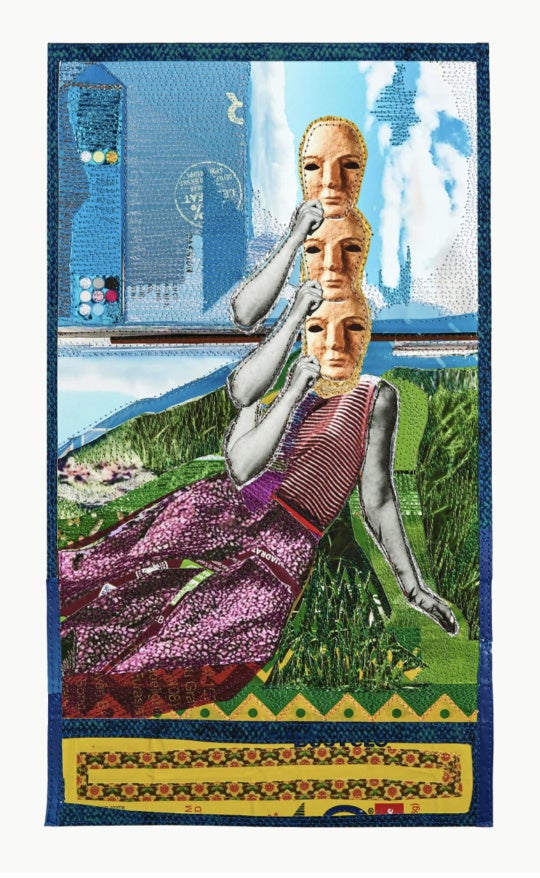
Once upon a time, a German scientist traveling in the New World found a tropical bird who parroted an unidentifiable language. For twenty years, the scientist studied his specimen’s noises only to realize that the bird was simply mimicking the sounds of its surroundings: fragments from South American tribes, Spanish and French colonizers, and the German scientist himself. Still, the scientist devised a rigorous system for the bird’s sounds and published his discovery of a language lost to the world. Or so I am told.
The wall text devised to narrate Never Spoken Again: Rogue Stories of Science and Collections retells the story of Alexander von Humboldt’s 19th century expedition in the Americas. The text curiously omits dates, names, or any detail that would ensure the story is, in fact, verifiable. These omissions give the text a fabled quality, so that it reads like a creation myth of modern society. This stylized curatorial framework mirrors the open-ended provocations of many artists included in the exhibition. On the same entry wall, a loosely shaped tropical bird sits atop a metal perch. Molded in a black material that loses its shape, David Peña Lopera’s Ave Nocturna asserts that form, like language, begins to disintegrate when taken out of its context.

What would a museum look like if it focused on the fictions of modern history rather than its facts? The Colombian curator, David Ayala-Alfonso, forms an answer in his exhibition of seventeen contemporary artists whose works make visible the fabricated histories embedded within museum collections. Through varying strategies, the artists included in this exhibition reveal all the made-up rules that have come to define what museums are, and what we, the public, are supposed to find within them.
Throughout the exhibition, artists use specific museum collections from around the globe as their source material. In Between Dig and Display, Alia Farid reinterprets photographs and documents of archeological artifacts from the never-completed Kuwait National Museum, highlighting how national history can be fashioned with ancient objects. Similarly, Maria Thereza Alves’s The Ways They Make War With Worlds highlights the ideological nature of museums by pairing the artist’s photographs of the Museo do Indio (established by a Christian mission in the Brazilian Amazon) with written testimony from native tribes about the mission’s human rights abuses. Rather than using the objects of a museum collection, two works by Giuseppe Campuzano from his Museu Travesti del Perú (Transvestite Museum of Peru) envision the queer histories that have been erased from museums purporting to hold an encyclopedic collection of ancient cultural histories.
The purposeful geometries Claudia Peña Salinas’s Cenote give form to the embodied presence of an ancient site. The sculpture references the Cenote Sagrado (Sacred Cenote) in the Yucatan, where pre-Columbia Maya honored the rain-god Chaac by depositing valuables and human bodies. In the early 20th century, Edward Herbert Thompson, an American archeologist, began dredging this sacred site, removing a wealth of objects from the floor of the cenote, now stored at the Peabody Museum at Harvard University. Instead of explicitly acknowledging this destructive history, Cenote honors the mythical and mundane forms of devotion that activate the site today. In this sense, Salinas’s small brass structure—adorned with colorful thread, glass owls, and postcards of the site—affirms the spiritual aesthetics of the Mayan people and their continued relevance within Mexican culture.
As I found my way to the small dark room in the back of the exhibition space I began to feel, again, as though I stumbled into a fable. The richly colored scenes and affecting narration of Carlos Motta’s Corpo Fechado – The Devil’s Work retell the true story of José Francisco Pereira, an enslaved man who was convicted of sorcery and sodomy in Lisbon in 1731. The 25-minute video imagines Pereira’s story through his own words, revealing how artists can recover the voices of the oppressed which have been lost to history. In the final minutes of the video Pereira is pictured as a Christ-like figure as he asks, “is there not an echo of those who have been silenced in the voices you hear today?” Yes, but that echo must be louder.
Much like the carefully crafted opening for Never Spoken Again, Motta’s video excels in demonstrating that history must always be reinterpreted in our present. Museums do not only exist as repositories of the past, they also reflect a desire for the future. We might assuage our current anxieties over the end of facts if we were to learn that unimpeachable truth never really existed in the first place.
Never Spoken Again is on view at the Jepson Center in Savannah, GA through September 12, 2021.




